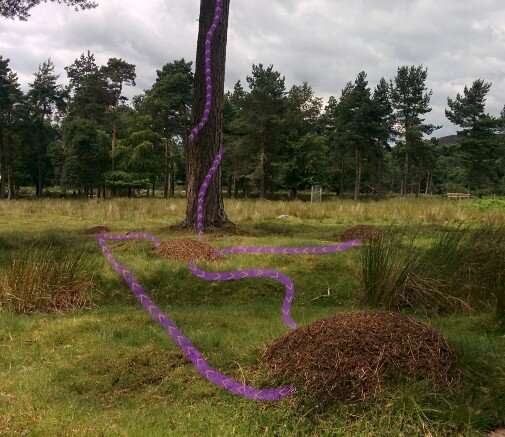Wood ants show the way when it comes to getting a good meal

With lockdown easing it is a dilemma many of us are facing: should we choose to go to the best place to eat out, or the nearest place that is good enough?
Well, now it seems the humble wood ant faces the same dilemma.
A University of York study has shown that wood ants also face trade-offs between visiting the nearest sources of food versus heading for high-quality food.
The study revealed that wood ant colonies use simple foraging rules, not just for collecting food, but also to make sophisticated and highly effective transport networks.
Sharing
These highly cooperative ants also share food between socially connected nests. This food sharing is efficient, low cost and robust to disturbance, the study reveals.
The researchers say the findings could have implications for humans, as transporting people and goods effectively in a complex environment is a big challenge and the highly cooperative wood ants appear to be very successful at it.
The authors of the study, which is published in the Proceedings of the Royal Society B, wanted to find out: how do ants make these successful networks? Can we learn from what the ants have achieved?
The study combined two modeling approaches used to understand ant foraging. One describes the behavior of the ants making and following trails, and one describes the pattern of where a colony distributes its ants depending on positive feedback.
Food sources
"Both models show us that foraging ant colonies successfully choose nearer and better food sources," said Dr. Elva Robinson, senior lecturer in ecology at the University of York.
"But these ant colonies can use foraging rules not just to solve the quality-distance trade-off when they are collecting food but also to make complex nest networks for food sharing.
"The network properties they demonstrate, efficiency and robustness, are important for human transport networks too. Ants make successful transport networks using simple positive feedback loops that mean they use good routes again in future. We could adopt these ideas in our own network design."
More information: Valentin Lecheval et al. From foraging trails to transport networks: how the quality-distance trade-off shapes network structure, Proceedings of the Royal Society B: Biological Sciences (2021). DOI: 10.1098/rspb.2021.0430
Journal information: Proceedings of the Royal Society B
Provided by University of York


















